Playground AI is great for quick images. But its credits system, limited resolution, and tricky licensing have made creators look elsewhere.
Influencer Studio now leads the pack. It combines photorealistic images, videos, and voiceovers all in one place, with clear commercial usage rights. Other strong contenders include Canva, Adobe Firefly, Leonardo AI, DALL-E 3, Hugging Face Spaces, and Midjourney.
Below, we'll explain why creators move away from Playground AI, what to consider when choosing alternatives, and how to find the best match for your workflow.
Creators love seeing text prompts instantly become images. But Playground AI often falls short once you need higher resolution, faster output, or clear commercial usage.
Its recent price increases and restrictive free tier mean creators quickly run out of credits. Brand-focused creators often hit limits with style control, batch generation, and reference image use.
Meanwhile, the competition has jumped ahead. New platforms offer better image quality, custom model training, and even video creation.
Given these drawbacks, many of us have started to look for alternatives to Playground AI.
Start with image quality. Check resolution, detail, and how well the model interprets complex instructions.
Next, consider pricing. Some platforms use credits, others offer unlimited subscriptions. Beware of hidden licensing costs.
Ease-of-use matters, too. A simple interface saves time and headaches, especially under tight deadlines.
Integration is important. Good platforms easily connect to your current design tools and workflows or (even better) have a full suite of tools all in one place.
Finally, look at commercial rights. Ensure the platform clearly states if you can use images for ads or resale.
Playground AI is fine for a single prompt and a quick image. Influencer Studio is designed for everything that follows: consistent brand visuals, short-form video, and fully-licensed assets you can ship the same day.
Influencer Studio’s workspace is deliberately simple. A single header bar lets you flip between Image, Video, and Audio creation in one click. In the sidebar menu, numbered steps walk you through the process. Prompt first, settings second, so you’re never hunting for hidden controls.
You start with a modern model stack—Stable Diffusion, Tavus Hummingbird, Kling 2.1, and VEO 3 for motion, images, and lip-sync animations all inside one workspace. Native face-swap keeps talent or product images perfectly aligned across every scene.
Every output is watermark-free and cleared for commercial use. New accounts receive 200 free credits; ongoing plans are usage-based, so you pay only for what you create. An API and enterprise controls are on the public roadmap for teams that need deeper automation.
If Playground’s credit limits, lower resolution, and ambiguous licensing slow your workflow, Influencer Studio delivers the scale, control, and legal clarity required for real-world campaigns.
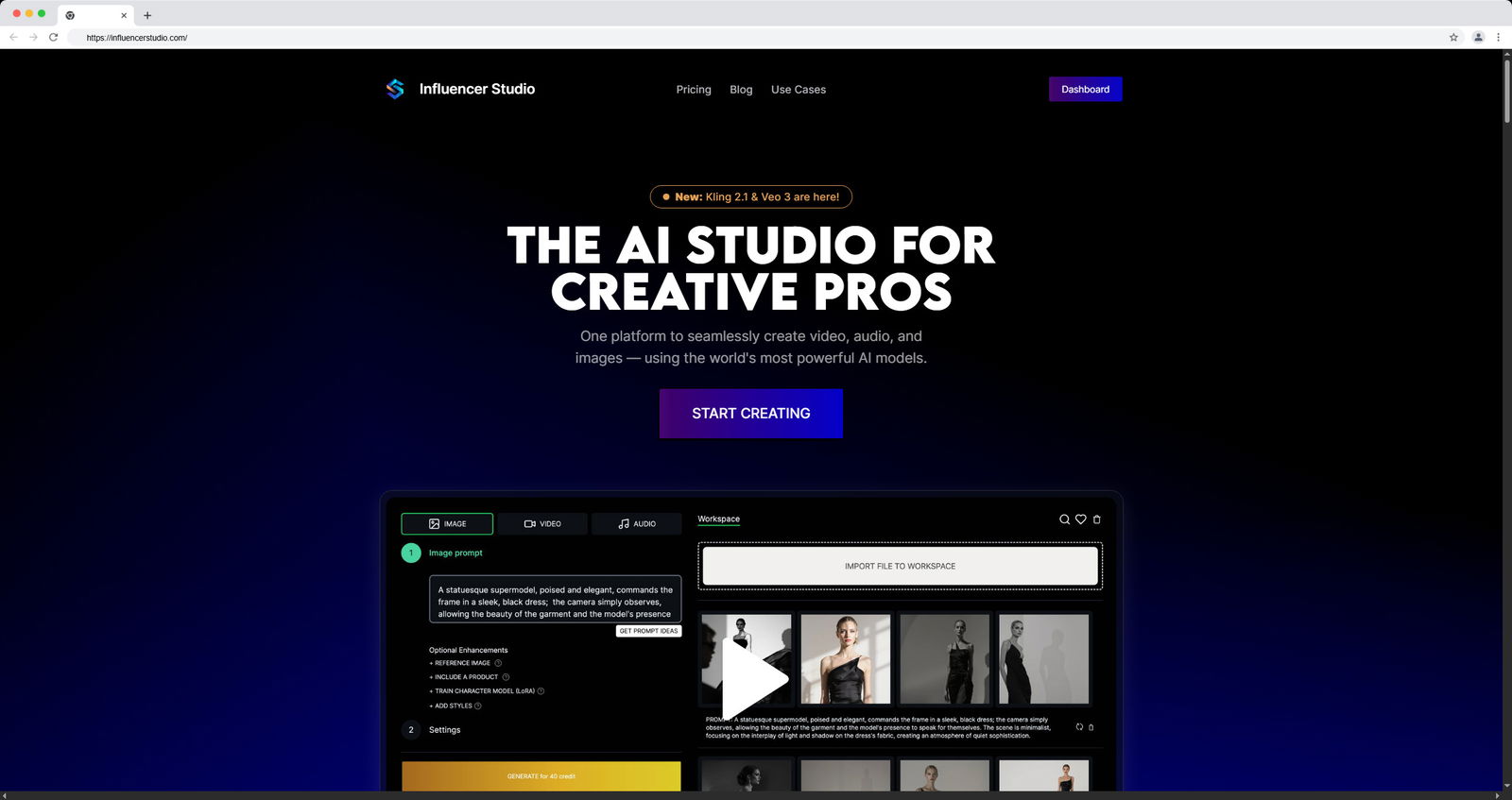
Canva integrates AI seamlessly into its familiar design interface. Its tools like Magic Media and Magic Design, quickly turn ideas into branded content.
You trade detailed control for easy templates and rapid workflow. Marketers especially like Canva for its user-friendly team features and affordable subscriptions.
However, Canva has started to feel overbloated lately. Canva now tries to compete on all fronts from image editing to video, and even spreadsheet management. Unfortunately, it doesn’t really stand out on any of those.
Adobe Firefly integrates directly with Photoshop, Illustrator, and Express. Ideal for design professionals already using Adobe Creative Cloud.
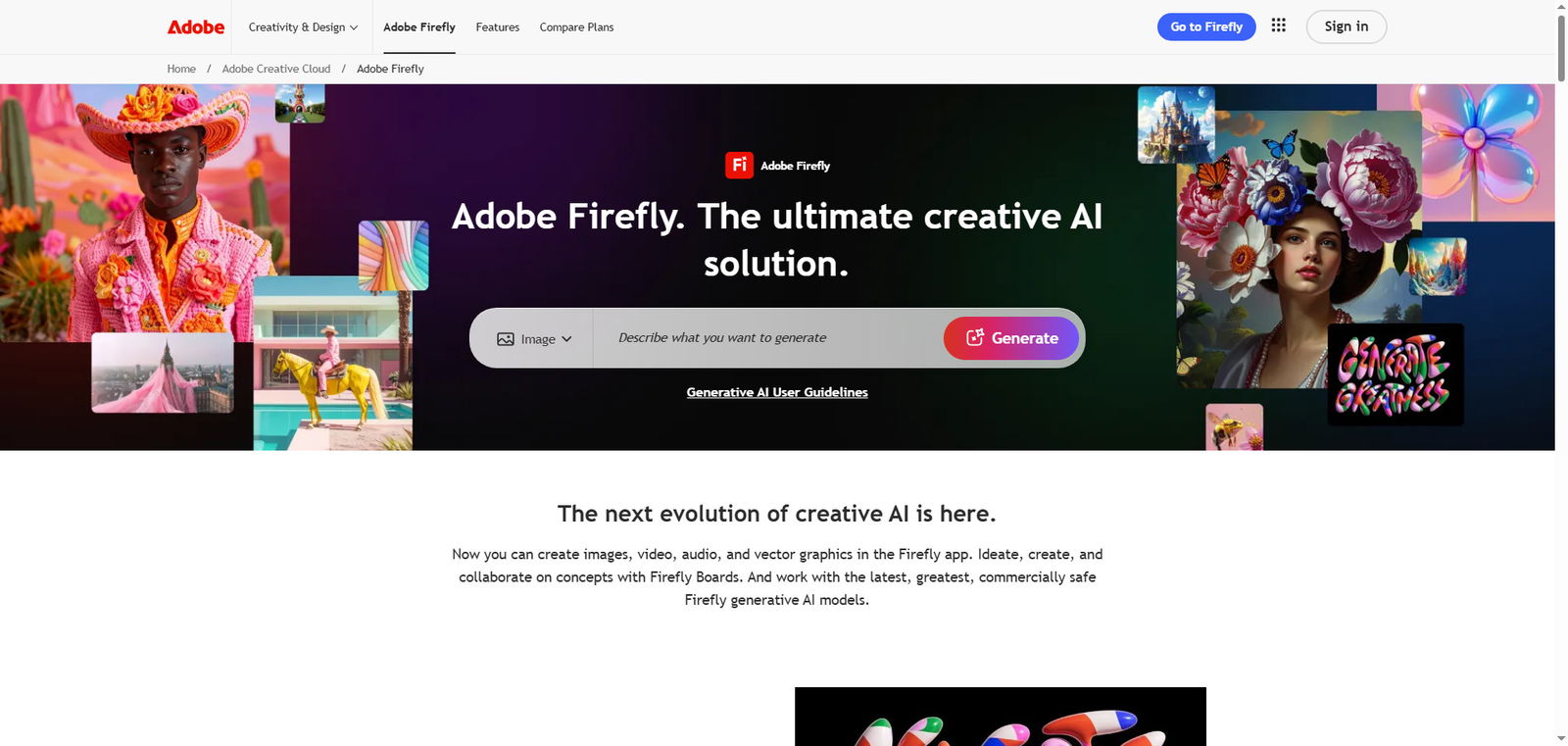
Firefly offers industry-standard quality, reliable commercial licensing, and strong safety controls. Its subscription cost might seem high, but it's often bundled with Adobe’s other tools.
However, Adobe Firefly can be costly for smaller teams or individuals. Its pricing structure is tied into Adobe's broader ecosystem, making it expensive if you're not already subscribed. It also has a steeper learning curve, especially for users unfamiliar with Adobe's tools.
Leonardo AI excels in detailed illustrations and stylized concept art. It offers precise control over visual styles without complex coding.
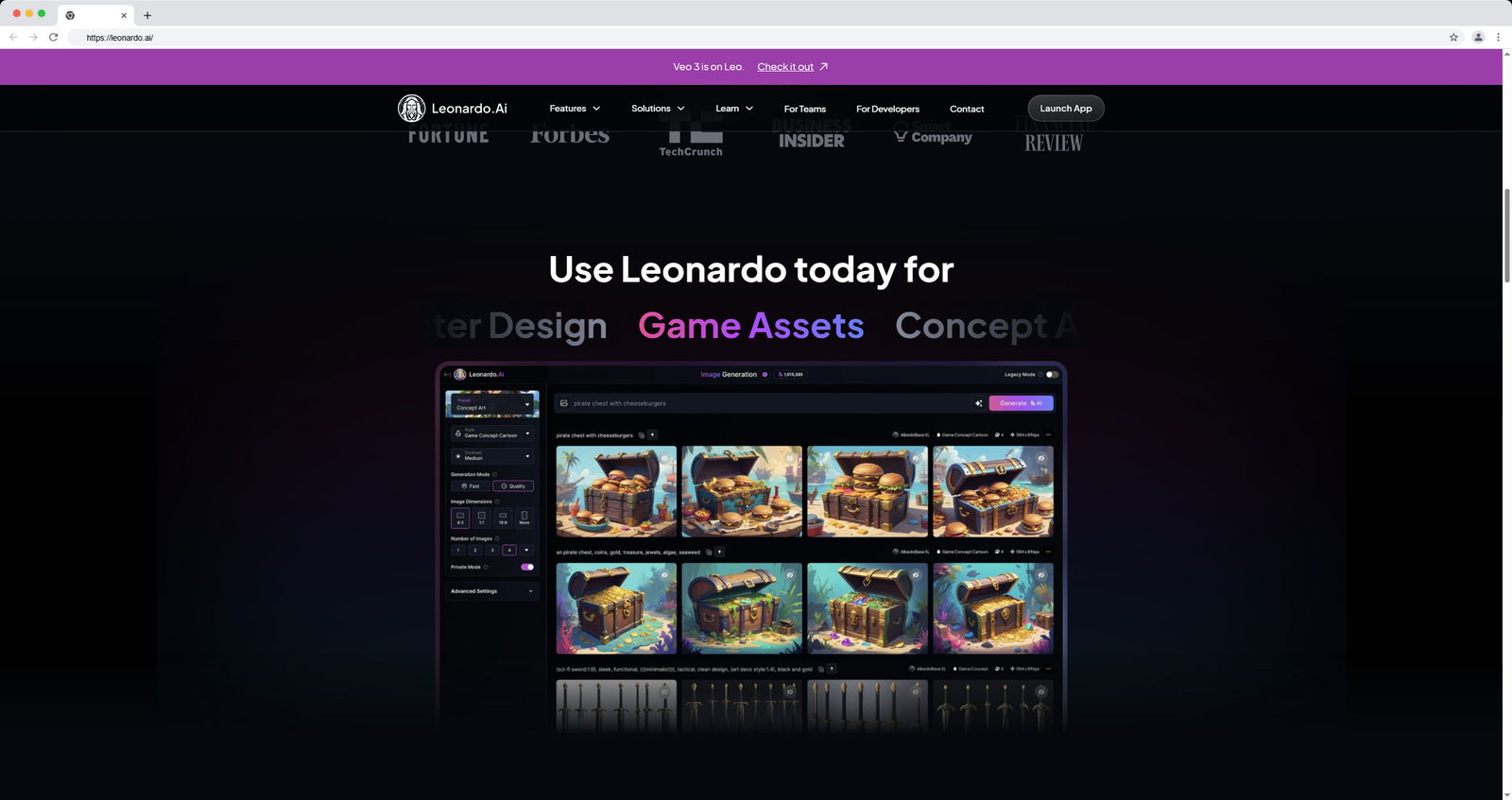
Great for game artists, illustrators, and creative teams needing highly customized art. Pricing starts free, but power users typically choose paid plans for increased output and customization options.
On the downside, Leonardo AI can feel overly complex if you just need quick images. Its interface and advanced settings require practice. Additionally, its pricing model limits output volume at lower subscription tiers.
Creatify stands out for quickly generating branded marketing content and social media visuals. It offers intuitive design tools and a user-friendly interface that appeals to marketers and small businesses.
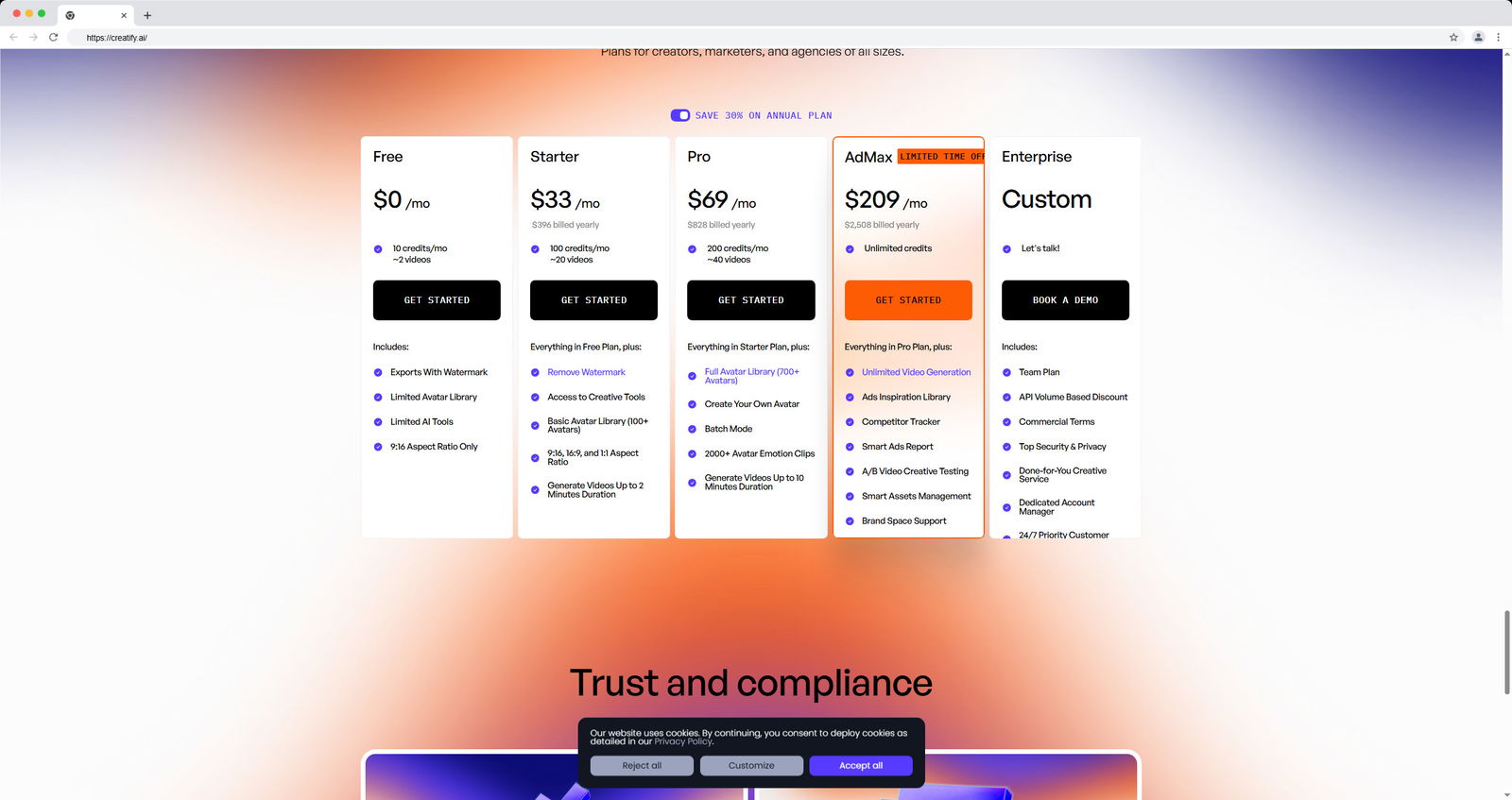
However, Creatify doesn't offer as much flexibility or detailed prompt control compared to more artistic platforms. Its output styles can feel somewhat generic if you're looking for unique visuals. Additionally, advanced editing features are limited.
NightCafe is a beginner-friendly text-to-image platform with a large preset style library and simple prompt controls. It offers support for multiple AI models, including Stable Diffusion and DALL·E, making it flexible for casual creativity.
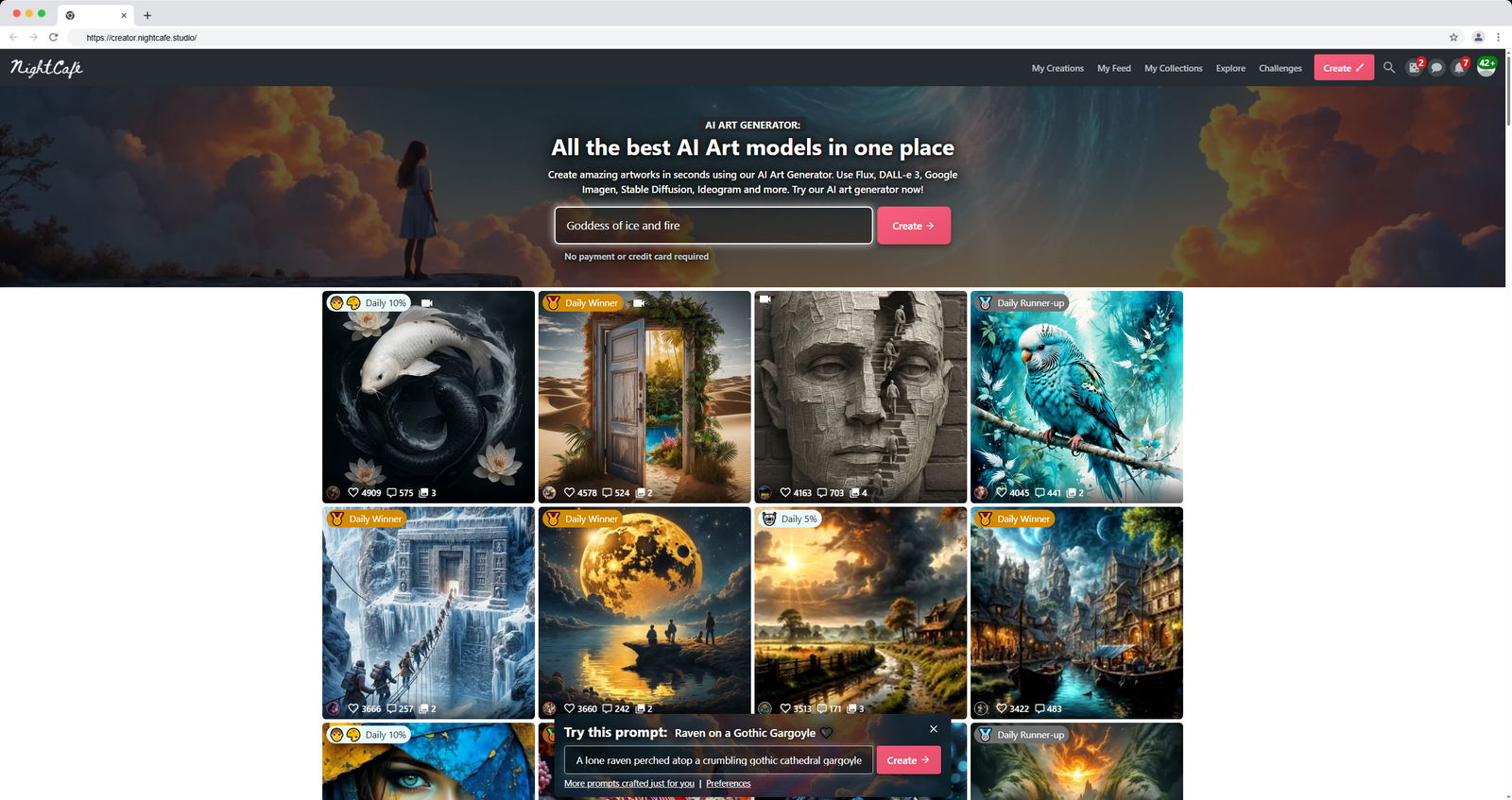
But its outputs often lack consistency and fine detail, especially in photorealistic generations. Commercial usage is limited without paying for licensing, and the interface can feel clunky for batch workflows.
Still, NightCafe is a good choice for hobbyists or educators exploring generative art in a lightweight, accessible way.
Midjourney is widely praised for its distinctive artistic style and creative outputs. It appeals strongly to digital artists wanting unique visuals.
But its advanced features are quite awkward to learn. Midjourney uses special prompt parameters that instruct its models to create images with specific modifications.
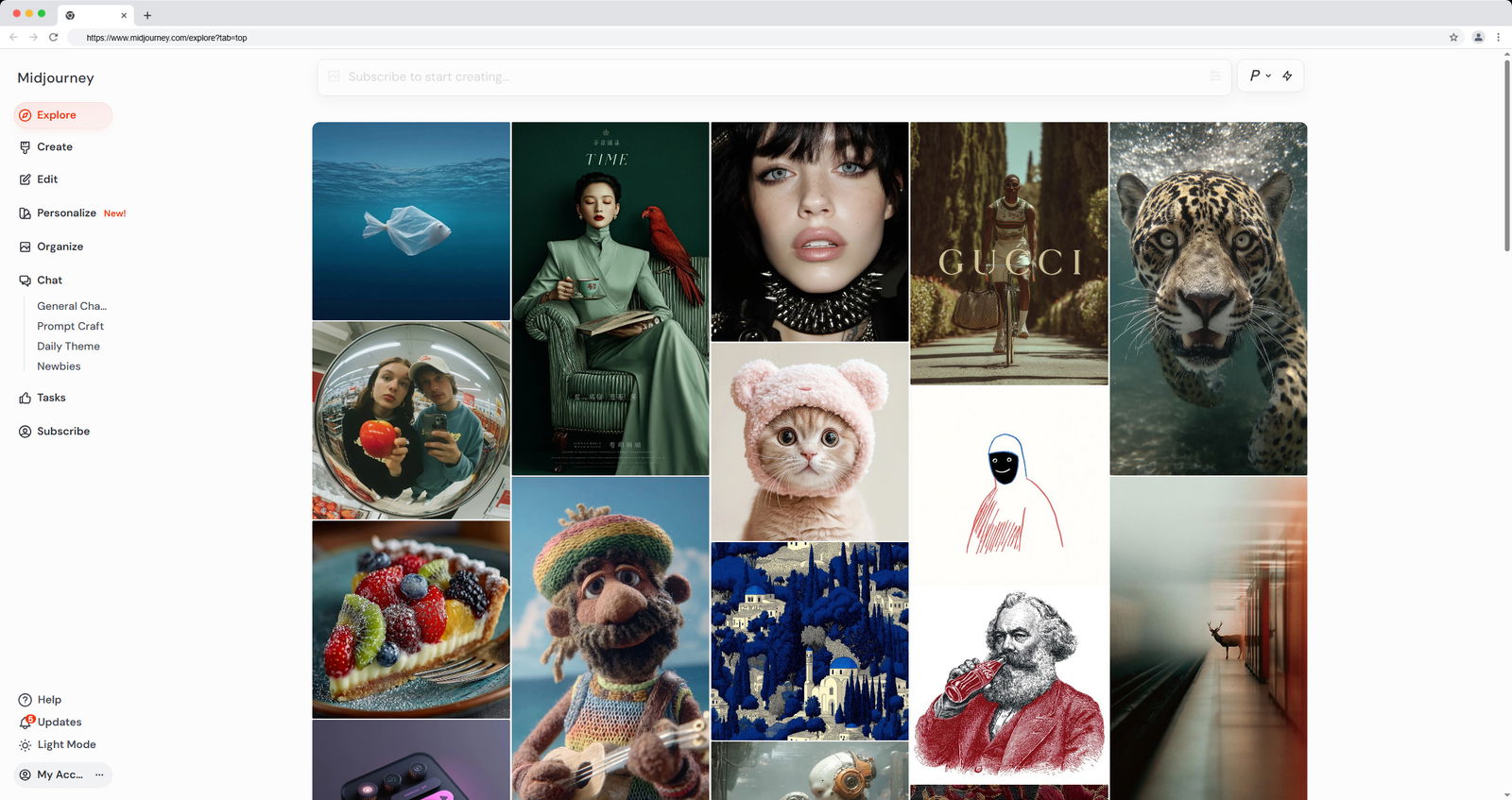
It feels outdated and needless to have to learn these when they could easily be integrated into a graphic user interface.
Plus, Modjourney is too “artsy” for some uses. The image generation models skew toward aesthetics even when realism is required.
Identify your priorities first. If realistic images for ads are your goal, Influencer Studio or DALL-E 3 are strong choices. Canva is best for teams wanting easy branding and templates.
Filmmakers might prefer Adobe Firefly’s integration. Hugging Face Spaces suits tech-savvy tinkerers. Midjourney appeals to artists wanting stylized visuals.
Test the free options first. The best way to find the right platform is by using it in real projects. Often, professionals combine two tools—one for initial ideas, another for finishing touches.
AI-generated media is rapidly evolving. By late 2025, expect even smoother video generation, easy 3D models, and instant integration with websites and apps.
Influencer Studio is already heading there, offering complete multimedia creation in one place. If you're curious about streamlined, end-to-end creative AI, start creating with Influencer Studio today.
Yes. Tools like Canva, Creatify, and NightCafe all offer free plans, though they come with limitations in resolution, credits, or commercial use. These are great for testing before deciding to upgrade.
Influencer Studio and Creatify are both excellent for quick, branded content. Canva is also a top choice for teams needing design templates and collaboration features.
Influencer Studio leads here. Its outputs are highly photorealistic and commercially safe. Midjourney can produce detailed images too, but often leans toward an artistic style over realism.
Yes. Influencer Studio supports both short-form and long-form AI-generated videos. Adobe Firefly also integrates video tools through its broader Creative Cloud suite, but setup can be more complex.